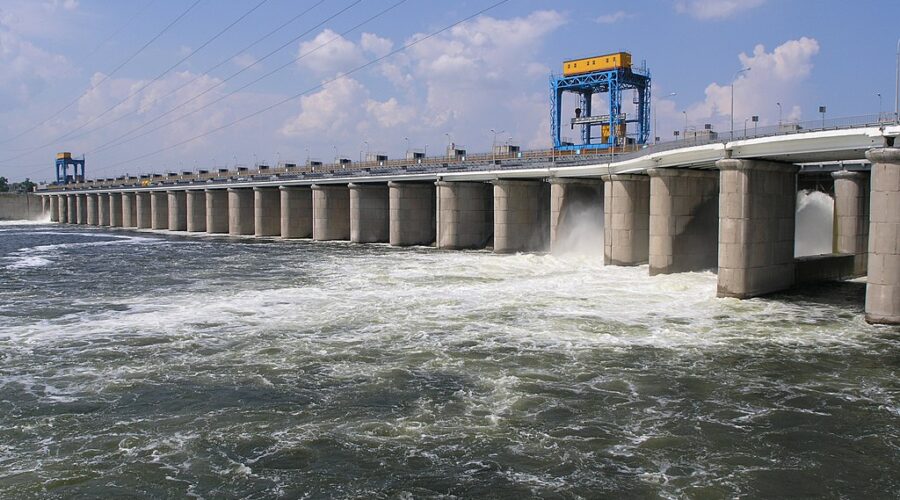“If in the first act you have hung a pistol on the wall, then in the following one it should be fired”, says a principle known as “Chekhov’s gun”, named after Russian playwright Anton Chekhov. The very fact that nuclear weapons exist suggests that, at some point, those who possess tactical nuclear missiles will decide to use them. But will the Ukraine war lead to a nuclear escalation?
On October 24, Russia’s Defense Ministry has “readied forces and capabilities” to deal with radioactive contamination following Moscow’s claims that Ukraine is developing a “dirty bomb”. According to Lieutenant-General Igor Kirillov, head of the Radiation, Chemical and Biological Defense Forces of the Russian Armed Forces, “the Kyiv regime may disguise the explosion of a dirty bomb as a Russian low-yield nuclear munition’s accidental detonation.”
In other words, the Kremlin claims Kyiv plans to use a “dirty bomb” or a low-power nuclear charge on the territory of Ukraine, and then to blame Russia for a “local nuclear Armageddon”.
In an alleged attempt to prevent such a scenario, over the past few days Russian military leaders Sergei Shoigu and Valery Gerasimov held talks with several Western top military officials. Such moves clearly demonstrate Russian weakness and the West’s superiority over the Russian Federation. The Kremlin, incapable of preventing Ukraine from creating a “dirty bomb”, begs NATO countries not to allow Kyiv to use a weapon improvised from radioactive nuclear waste material and conventional explosives. But the West insists that the Russian claims are groundless, and argues that Moscow may use the “dirty bomb” threat as a pretext for further escalation of the Ukraine conflict.
Indeed, Western leaders do not take the Kremlin’s rhetoric seriously, which is not surprising given that back in February Russia started accusing Ukraine of planning to use radioactive weapons. At the time, Shoigu and Gerasimov held numerous consultations with the American and British defense secretaries. Only after those talks did Russia launch the invasion of Ukraine on February 24. Thus, it is entirely possible that the two Russian top military figures have yet again informed their Western partners of Russia’s future actions.
On the other hand, it is not improbable that Moscow is using the “dirty bomb” threat as a means of applying of pressure on Kyiv and the West. What the Kremlin desperately needs at this point is a ceasefire that would allow Russia to preserve status quo on the ground. However, under the current circumstances, it is very unlikely that the Western-backed Ukraine will agree to sign any deals with Moscow. Thus, both sides will continue preparing for offensive military actions, although fierce battles may only come next year.
In the meantime, the Ukrainian Armed Forces will undoubtedly attempt to restore control over Kherson, and possibly some other strategically important cities in the southeast of the country. Russia, for its part, is expected to increase air, drone and missile strikes on Ukrainian energy infrastructure. But given that the United States and its European allies will almost certainly increase supplies of air defense systems to Ukraine, Russia will have to spend millions of dollars on missiles and drones that will do rather limited damage to Ukraine’s infrastructure.
Kyiv, however, fears that Russia could soon blow up the Kakhovka dam on the Dnieper River, which would lead to a large-scale disaster. Such an action is possible only if Russia, for whatever, reason withdraws its troops from Kherson. Otherwise, it would not make much sense for Moscow to create a large-scale disaster to the city it considers to be a part of the Russian Federation. It is Ukraine that has a strong motive to create serious damage to the Russian forces in the Kherson region, and make their occupation there more expensive. Thus, it should not be ruled out that eventually Ukraine, rather than Russia, will decide to blow up the Kakhovka dam.
However, it is debatable whether Kyiv would benefit from a potential “dirty bomb” escalation. Although the level of radiation might be relatively harmless, such a move could serve as a pretext for Russia to use tactical nuclear missiles in Ukraine. Quite aware of that, Ukrainian President Volodymyr Zelensky reportedly called for a preemptive nuclear strike on Russia. But is the world really on the brink of a nuclear war?
Where there’s smoke there’s fire. In 2015, Ukrainian political analyst Igor Gekko, also known as Igor Berkut, said that there is a high possibility that Russia will launch a nuclear attack on Ukraine’s port city of Odesa between 2022 and 2030. His statement, however, comes from a semi-sarcastic interview, which is why nobody took it seriously.
But there is a grain of truth in every joke. Therefore, a nuclear escalation of the Ukraine war should not be ruled out.
Image: Kakhovka dam by Липунов Дмитрий

